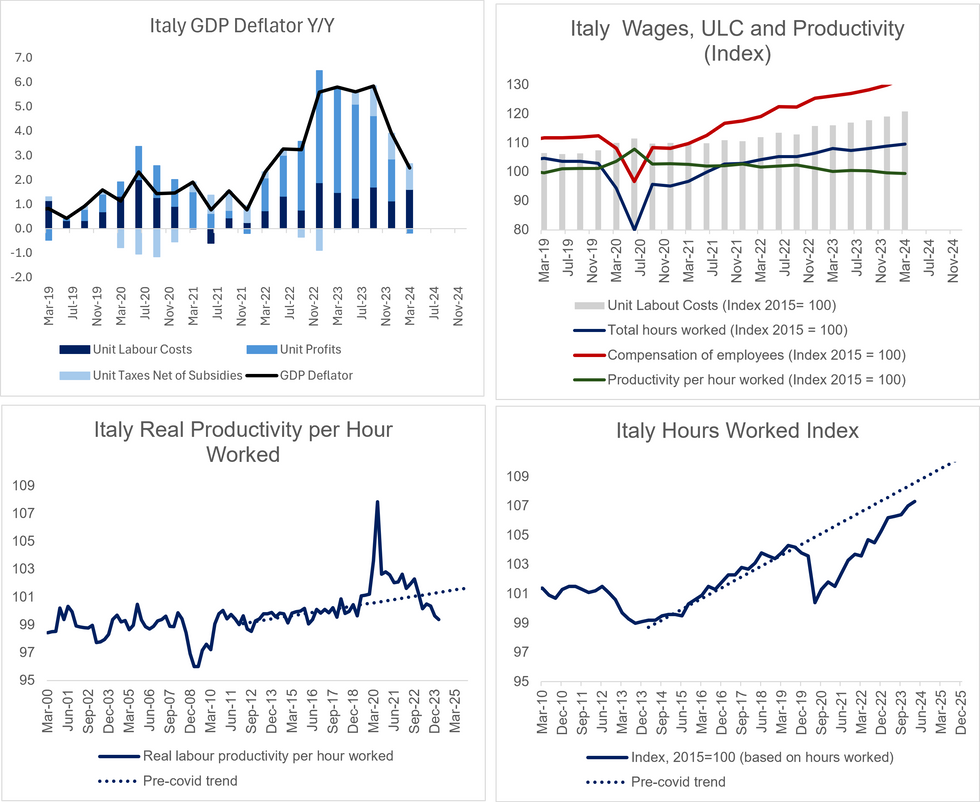-
Policy
Policy
Exclusive interviews with leading policymakers that convey the true policy message that impacts markets.
LATEST FROM POLICY: -
EM Policy
EM Policy
Exclusive interviews with leading policymakers that convey the true policy message that impacts markets.
LATEST FROM EM POLICY: -
G10 Markets
G10 Markets
Real-time insight on key fixed income and fx markets.
Launch MNI PodcastsFixed IncomeFI Markets AnalysisCentral Bank PreviewsFI PiFixed Income Technical AnalysisUS$ Credit Supply PipelineGilt Week AheadGlobal IssuanceEurozoneUKUSDeep DiveGlobal Issuance CalendarsEZ/UK Bond Auction CalendarEZ/UK T-bill Auction CalendarUS Treasury Auction CalendarPolitical RiskMNI Political Risk AnalysisMNI Political Risk - US Daily BriefMNI Political Risk - The week AheadElection Previews -
Emerging Markets
Emerging Markets
Real-time insight of emerging markets in CEMEA, Asia and LatAm region
-
Commodities
-
Credit
Credit
Real time insight of credit markets
-
Data
-
Global Macro
Global Macro
Actionable insight on monetary policy, balance sheet and inflation with focus on global issuance. Analysis on key political risk impacting the global markets.
Global MacroDM Central Bank PreviewsDM Central Bank ReviewsEM Central Bank PreviewsEM Central Bank ReviewsBalance Sheet AnalysisData AnalysisEurozone DataUK DataUS DataAPAC DataInflation InsightEmployment InsightGlobal IssuanceEurozoneUKUSDeep DiveGlobal Issuance Calendars EZ/UK Bond Auction Calendar EZ/UK T-bill Auction Calendar US Treasury Auction Calendar Global Macro Weekly -
About Us
To read the full story
Sign up now for free trial access to this content.
Please enter your details below.
Why MNI
MNI is the leading provider
of intelligence and analysis on the Global Fixed Income, Foreign Exchange and Energy markets. We use an innovative combination of real-time analysis, deep fundamental research and journalism to provide unique and actionable insights for traders and investors. Our "All signal, no noise" approach drives an intelligence service that is succinct and timely, which is highly regarded by our time constrained client base.Our Head Office is in London with offices in Chicago, Washington and Beijing, as well as an on the ground presence in other major financial centres across the world.
Real-time Actionable Insight
Get the latest on Central Bank Policy and FX & FI Markets to help inform both your strategic and tactical decision-making.
Free AccessFall In Unit Profits Helps GDP Deflator Moderate In Q1
The Italian GDP deflator moderated to 2.48% Y/Y (vs 3.91% prior) in Q1, as a sharp pullback in unit profits absorbed a rise in unit labour costs.
- Unit labour costs rose 1.5% Q/Q (vs 1.1% prior) and 4.1% Y/Y (vs 2.8% prior), thus contributing 1.61pp to annual GDP deflator growth in Q1.
- On an annual and quarterly basis, compensation per employee grew at a faster rate than in Q4 ’23. On the other hand, hours worked grew at a slower pace than last quarter (and is still below the pre-covid trend), while real productivity growth remained negative. These dynamics pushed up unit labour costs in Q1.
- However, unit profits fell 1.3% Q/Q and 0.4% Y/Y, contributing -0.18pp to GDP deflator growth overall.
- Reduced firm pricing power likely drove the pullback in unit profits, and this theme is still evident in recent data. The May manufacturing PMI noted that firms reduced output charges in spite of rising input costs in order to become “more price competitive and encourage sales”.
- The dynamics of the GDP deflator are consistent with those seen in Spain: unit labour cost rises are buffered by falls in unit profits, helping the overall GDP deflator moderate.
- The ECB is also expecting to see a similar development in the Eurozone-wide national accounts data on Friday.

To read the full story
Sign up now for free trial access to this content.
Please enter your details below.
Why MNI
MNI is the leading provider
of intelligence and analysis on the Global Fixed Income, Foreign Exchange and Energy markets. We use an innovative combination of real-time analysis, deep fundamental research and journalism to provide unique and actionable insights for traders and investors. Our "All signal, no noise" approach drives an intelligence service that is succinct and timely, which is highly regarded by our time constrained client base.Our Head Office is in London with offices in Chicago, Washington and Beijing, as well as an on the ground presence in other major financial centres across the world.
